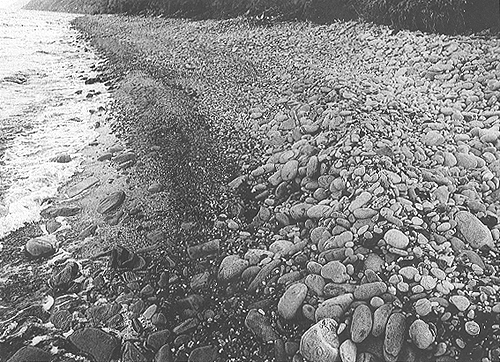
Edgewise pebbles
Plate 65

Edgewise pebbles
Plate 65
Plate 65 shows the emerged part (foreshore and backshore) of a gravelly beach forming a narrow strip at the foot of a coastal cliff (Adriatic coast of Italy). The different effects of fair weather and storm waves can here be appreciated. The former ones sort the materials arriving to the beach from stream mouths or cliff erosion: they separate sand from gravel, disposing them in different parts of the beach profile, and remove finer particles by taking them away in suspension. Here we see small waves lapping on fine sand with scattered pebbles, then, proceeding landward, a string of coarse sand and small pebbles making an abrupt transition to larger pebbles.
Steeper waves raised by storms erode the sediment from the submerged portion of the beach, and bulldoze it, without much selection, on the emerged portion (which is then inundated), where they loose their energy. The sea retreats from the backshore after the storm, and normal waves do not modify the storm deposits (but walking creatures can). Arcuate ridges, representing storm berms, are thus preserved. In them, pebbles are stacked or wedged with steeply inclined or subvertical long axes. A prevalent seaward dipping can be observed in the foreground.